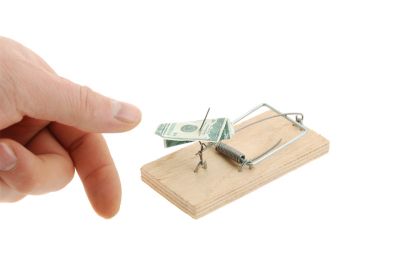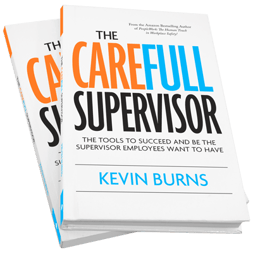Here are the three steps to take employee focus off of money and put it back onto safety

To a union audience at a workshop, I asked the question, “Why do you work safely?” The answers varied from, "it’s the right thing to do" to "money talks."
The “money talks” response referred to the quarterly bonus incentives that the company offered. If all was good in safety, each employee would receive a quarterly bonus of just over $250.00 - or just under 50 cents per hour. However, if one team member had a safety incident, it would drag down the amount of bonus that the others in the work unit would receive. Some didn't want to work with some of the others because they jeopardized their personal cash bonus. If money weren’t on the line, these guys would have no problem working with those same unsafe individuals.
To the “money talks” response, I asked if he would purposely stop working safely without the incentive?” He admitted that it’s not what he meant.
In August 2013, I wrote a Blog post, 5 Reasons Why Safety Incentives Do Not Work. I discussed that one of the reasons safety incentives don’t work is because safety needs to be the expectation.
A safety incentive should never be a performance bonus or a reward. Good safety should be the expectation - the rule rather than the exception. It should be a condition of employment. If workers only improve their performance for money, then they weren't giving their best to start with.
So how do you replace an existing safety incentive program without a mass mutiny? Here are the three steps you must take to take the focus off of the money and onto safety:
1Give them the money anyway. Just give everyone a raise equal to the incentive amount. Now money is off of the table. You can begin to concentrate your efforts around safety without the distraction of money. Remove the uncertainty and there is no longer any reason to sweep anything under the rug. Nor will there be a reason to hold back reporting or to engage in less-than-desirable practices. They won't go back to their old ways because a part of them is still going to feel like the money is still tied to their performance. This will not be an issue if you don’t remind them of it. Once money is no longer the reason they are paying attention to safety (or a distraction), you can focus on the safety program.
2Make them feel valued. Soldiers in uniform walking through airports or train stations find people bursting into applause. How can you not feel appreciated? How do you not feel valued when acknowledged? You need to make your people feel valued and, more importantly, valuable. Employees won’t care about where they work if they feel that you don’t care. People who feel valued, have a greater propensity for wanting to live up to the standard they believe others have of them. Just like soldiers, thank your own people for their safe service. Let them know you care about them as people. Get to know them and their families. Get out of your head and into your heart. Treat them like you care about what happens to them - and feel it, for real.
3Build high-performing, tight teams. Compare your safety program to your favorite team sport. In Canada, it’s hockey. And I’m from Canada. Specialty teams in hockey are a tight-knit group of specialty players. Whether it be penalty-killing or power-play units, they get good at it. These teams practice, drill and repeat their set plays. Each player knows where they other players are going to be. Each player has a responsibility to protect the other players when caught out of position. Safety is just like that. If you view the safety manual as a playbook, you can point to a set play that you will execute in each situation. Drill it. Practice it. Repeat it. Get good at building high-performing teams that are tight and look out for each other.
Change the culture from one of “how much are you gonna pay me to be safe?” Become the “we are a championship team playing at championship level” kind of culture. Pay employees fairly. Value them. Make them part of a high-performance team. They will care about their contribution. They will also care about each others' safety. You will never get that from incentives.
--
Kevin Burns is a management consultant, safety speaker and author of "The Perfect Safety Meeting." He delivers engaging and entertaining keynote safety presentations for everyone: from front-line staff to senior management. He helps people see the light when it comes to buying-in to the safety program.


